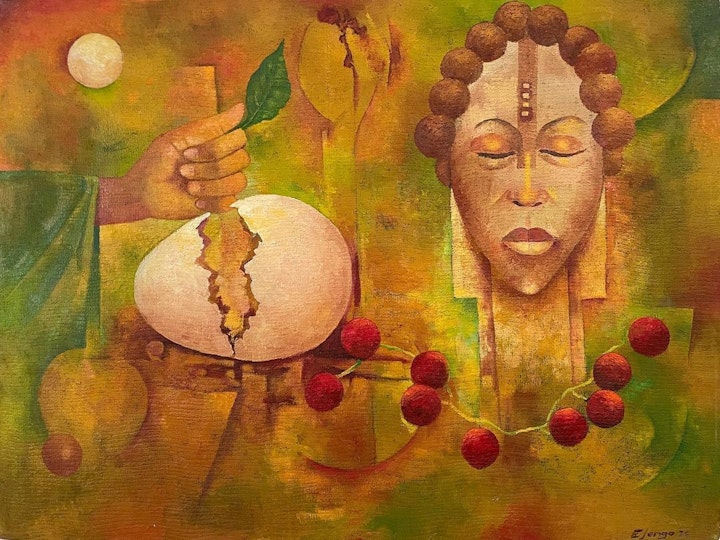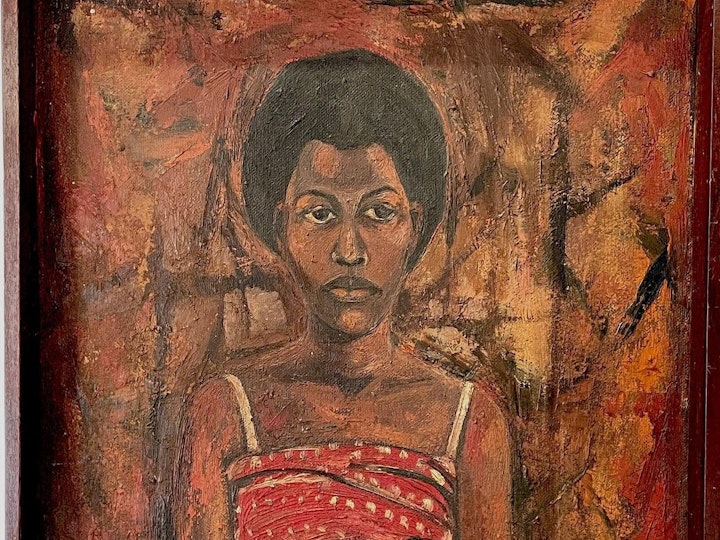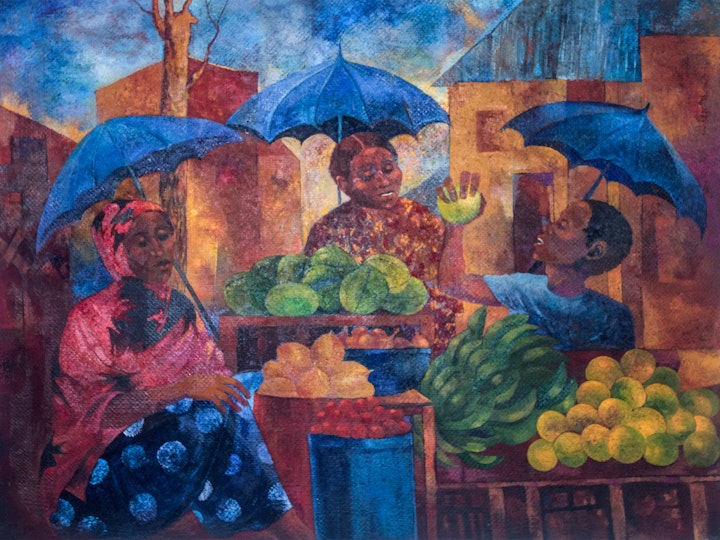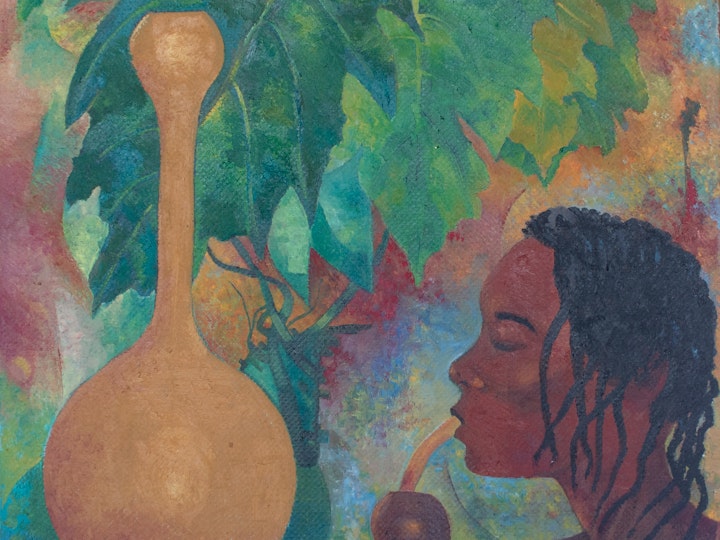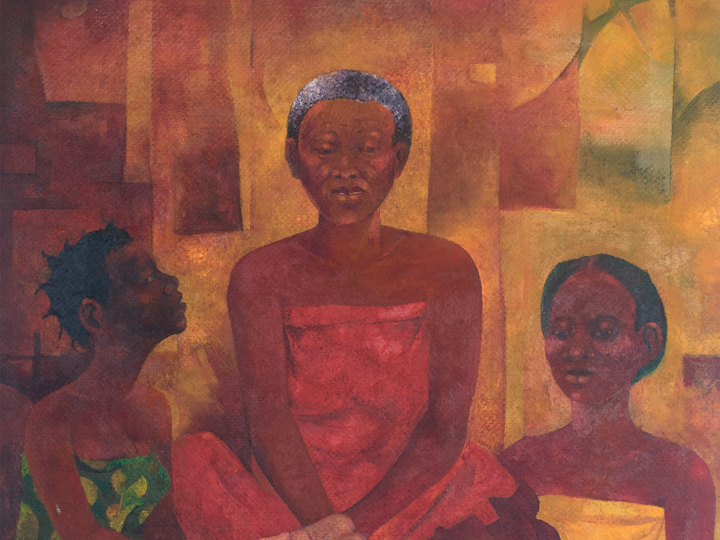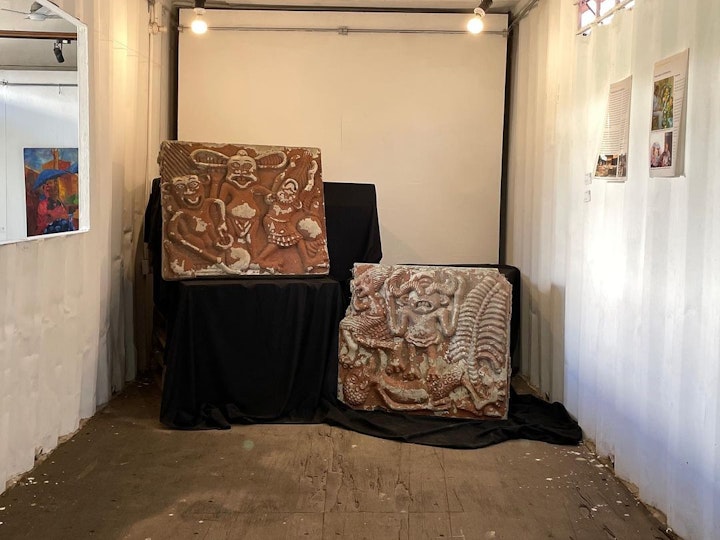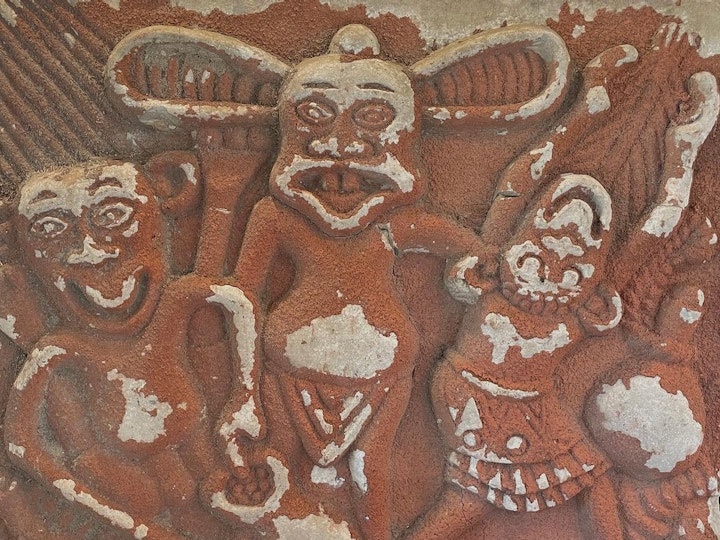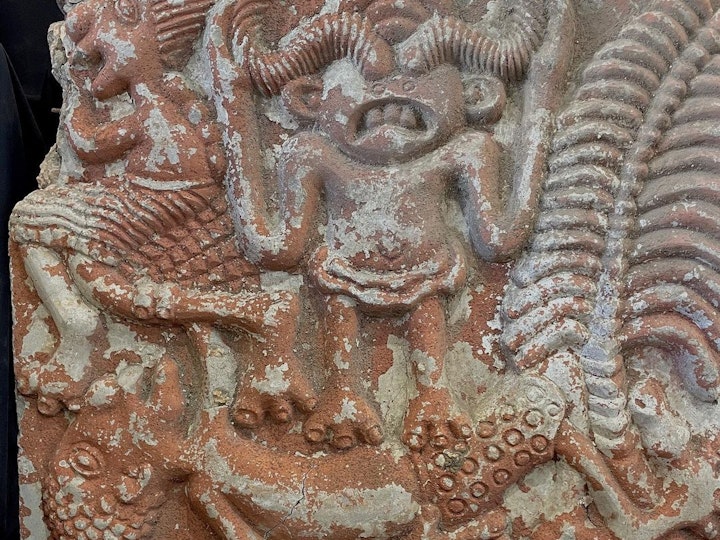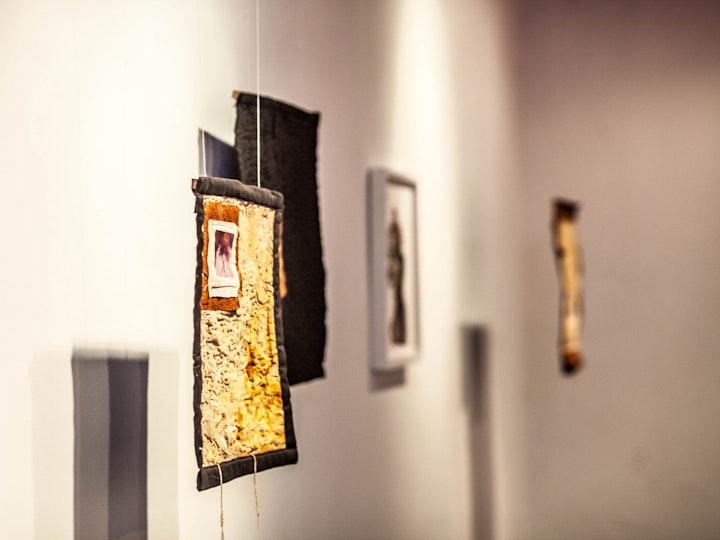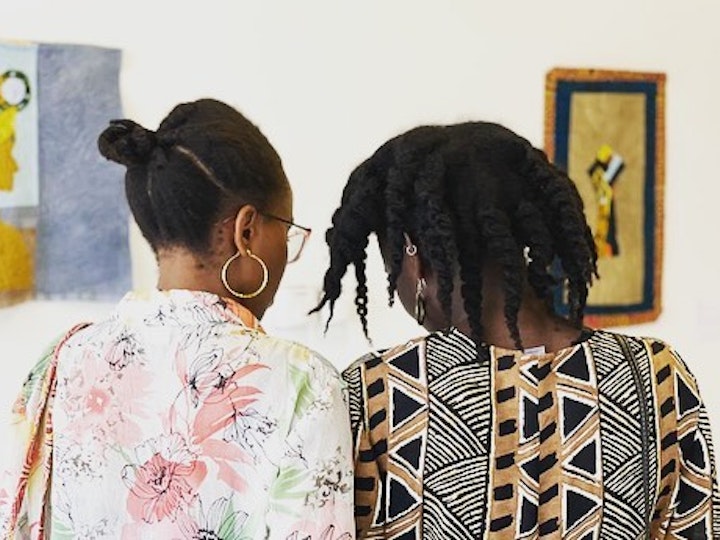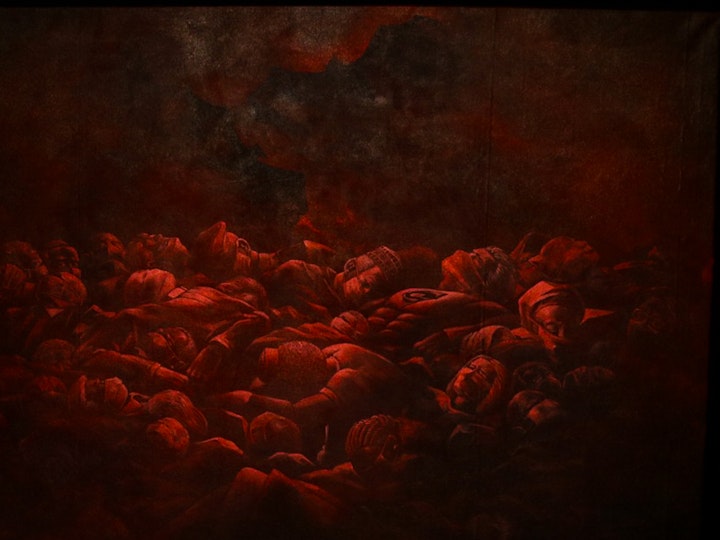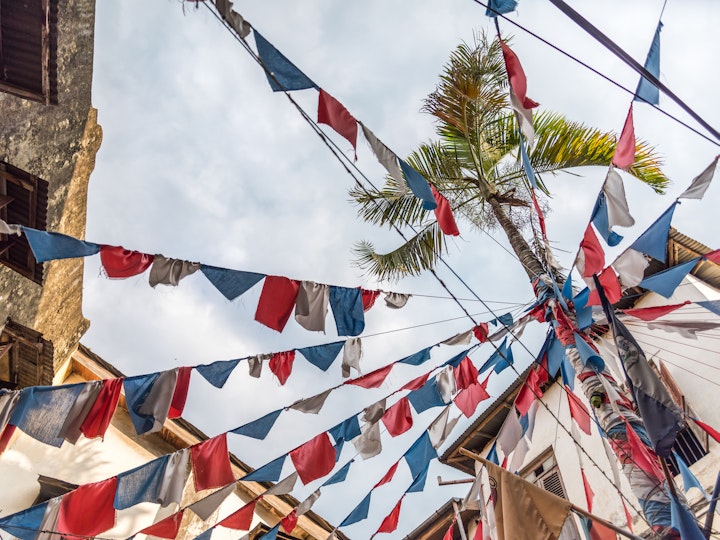rebecca yeong ae mzengi corey

Living Art, Living History: Elias Jengo and George Lilanga
curationLiving Art, Living History: Elias Jengo and George Lilanga
curation
A special double-exhibition for the 10th edition of the East Africa Art Biennale, highlighting the work and legacy of two of Tanzania's most influential and inspiring artists, Elias Jengo and George Lilanga.
I. Elias Jengo: A Life of Art
Elias Jengo (b. 1936) is one of Tanzania’s greatest modernist painters and a founding member and chairman of both the East Africa Art Biennale and Nafasi Art Space. He also helped initiate the Department of Arts at the University of Dar es Salaam, where he is a lecturer to this day. Jengo is famous for his painting, which combines a palette of supple colours beautifully mixed with a steadfast commitment to telling the stories of his people and culture. He is also beloved for his generosity - his studio is always open to young students, where he shares his experience and advise on both art and life as well as giving access to his large collection of art books and exhibition catalogues. This exhibition features 7 of Jengo's paintings, including a portrait of his wife Rose Jengo, which was painted on 31 December 2021, as well as a number of newer works created between 2017-2020, as well as a selection of works by his students and other young artists whose work has been clearly influenced by his unique style and approach to visual storytelling.
II. George Lilanga: An Unfinished Story
About George Lilanga
George Lilanga (1934 - 2005) was a Tanzanian sculptor and painter from Mtwara region, whose contemporary interpretations of Makonde “shetani” sculptures gained international fame and recognition during the course of his life. Lilanga moved to Dar es Salaam in 1970 to pursue a career in art, and was given a job as a night guard at Nyumba ya Sanaa by his uncle, artist Augustino Malaba. He quickly became well known for his colorful, playful, and intricate paintings and sculptures that drew inspiration from traditional Makonde sculptures but added modern details and narratives. His work was widely exhibited and collected in the US, Japan, India, and throughout Europe. As a long-time artist at Nyumba ya Sanaa, George Lilanga designed stucco friezes for the roof as well as metal gates for the cultural centre in 1982. There were an estimated 150-200 of the friezes created. During his life, he taught and mentored family members and other artists in his style, eventually establishing a workshop at his home studio in Mbagala, Dar es Salaam, where he oversaw the production of his works. The studio is active till today, under the creative direction of Lilanga’s nephew, Hendrick Lilanga.
The Lilanga Friezes
This is what is said to have happened: the artist George Lilanga created more than 100 stucco friezes for the roof of the cultural centre Nyumba ya Sanaa. When the building was demolished in 2011 to make way for a bank, the friezes were sold for 50 USD a piece to a European collector, loaded onto a container, and ready for shipment to Germany, but stopped at the 11th hour. Later that year there was an event at the National Museum of Tanzania where several of the restored Friezes were displayed along with placards on their history and importance as major work of Lilanga and part of Nyumba ya Sanaa. Many believed this was a positive sign that the full collection of friezes would be catalogued, researched, restored, and given a permanent display where they could be enjoyed by Tanzanians and international visitors for decades to come. Such a platform would create a meaningful space for reinforcing the continuity of cultural and artistic memories. Unfortunately, that work was never completed. Today, only a few friezes remain on display at the museum, but the rest have languished - for many years in the courtyard of the museum, and now at a new location at the National Arts Council (BASATA). Over the years, natural wear and tear as well as transfer between spaces has led to more deterioration and damage to the friezes. It would have been a great injustice for the Lilanga Friezes to be taken to Germany, inaccessible to most Tanzanians. However, it is also a great misfortune that while they have stayed at home where they belong, they have not been properly cared for in the decade since.
We have an advantage here in that these friezes never left Tanzanian shores. If they had been shipped out, it’s unlikely they would have ever returned. So what will we do with this advantage? Because we must also admit it poses a challenge as well. It may have been easier to protest the loss of the friezes than to protect and preserve them. We cannot throw up our hands and say “it’s too late” or “it’s out of our hands”. The Friezes are here and it is up to us, those who care about the continuity of the Tanzanian artistic story, that they continue to exist, and to be accessible to as many Tanzanians as possible, to have the chance to inspire and teach others. We hope that this display of two of the Lilanga Friezes in this year’s 10th Edition Biennale will be a reminder and a wake-up call about the capacity of art to serve as a vessel for cultural memory and history, and that it will create renewed energy and commitment to the preservation and public accessibility of the Friezes. We’re grateful to the National Arts Council (BASATA) supporting us to create this special exhibition, and believe this is just the first step in what must be a collective effort by many to ensure that the Lilanga Friezes remain a part of our living history for years to come.
Statement by:
Rebecca Corey, Nafasi Director & ExhibitionCurator
Fifi Mbogho, EASTAFAB Director
Jesse Gerard, Biennale Curator
